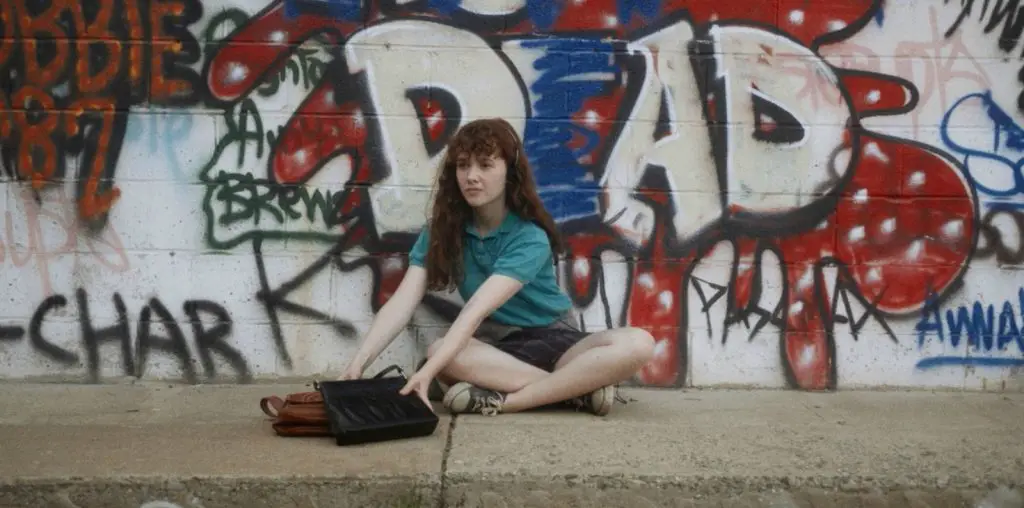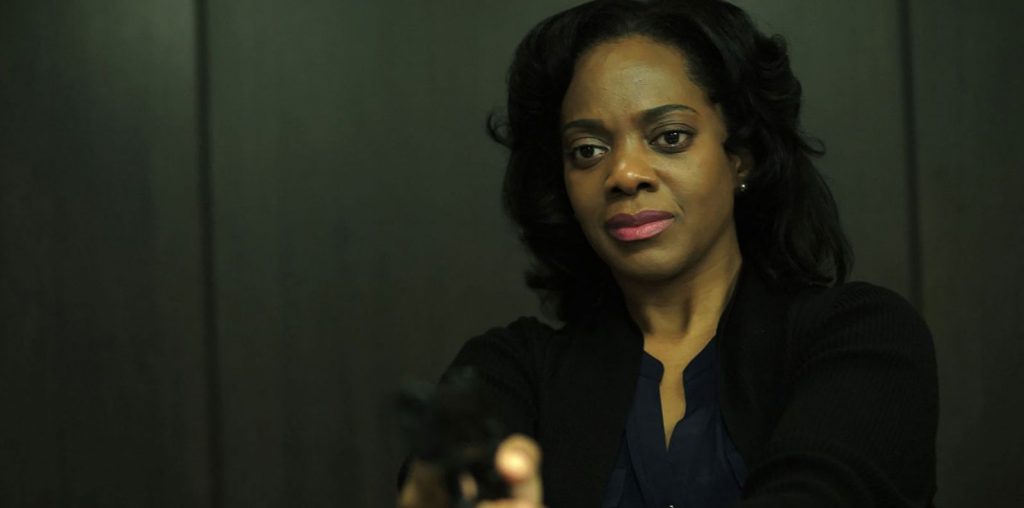
I tell ya, there’s nothing that will take your mind off emergency oral surgery like an extremely angry black man. So, an hour and a half after sutures were put in my mouth, I went off to see “Bamboozled”, a film that would lead you to believe that director Spike Lee was in more pain than I was. After screening the movie, I think he’s got good reason to be so pissed off.
As a matter of fact, the director’s new masterpiece is a summation of nearly everything he has learned as a filmmaker, and about black culture, but he doesn’t feel the need to beat the audience over the head for each lesson he’s trying to impart. Spike once proclaimed to the press that black people couldn’t be racist. “Bamboozled”, among other things, proves different. This film is more complex and articulated than anything Spike has ever done. It is not only his best film to date, but also his angriest.
Now, what you can get out of any great film usually depends on what you bring to it. To understand what Lee is trying to tell me, I not only have to examine the story of “Bamboozled”, but what I’ve learned about racism in my own life.
The movie takes its title from a quote from Malcolm X telling his followers, not to let themselves be “bamboozled”. The first image we see is Pierre Delacroix (Damon Wayans) in his penthouse clock-tower condo. This home is as far from the environment where Pierre grew up physically as the man himself is psychologically. He has struggled from Harvard to the top rungs of the television network where he now works. However, he is not happy. His boss, Dunwitty (Michæl Rapaport), has turned down every proposal Pierre has made for shows about dignified, middle-class blacks. Dunwitty only wants sitcoms based on mocking black stereotypes.
Now Pierre has rejected “urban culture” completely. If Wayan’s character seems like an exaggerated portrayal, it’s because the character himself has manufactured an image for himself as cultivated, with an unplaceable accent. He only refers to other blacks as “Negroes”. He’s really appalled by the jive-talking Dunwitty. With a black wife and a wall full of pictures of black sports heroes, the extremely white boss smugly informs his hapless employee that he is “blacker” than Pierre.
Seething, Pierre huddles with his assistant Sloane (Jada Pinkett-Smith) and schemes to create a show so offensive with black stereotypes that anyone who approved it would be massacred. It will be an update of the black-faced minstrel shows popular from the 19th century until nearly the civil rights movement. He transforms a pair of street performers, Man Ray (Savion Glover) and Womack (Tommy Davidson) into his stars, ManTan and Sleep ‘n Eat.
Pierre is successful, but not in the way he imagined. The show makes it to the air and becomes a hit, but without any satirical connotation to mute it. Tempers and indignation rise until final events bring tragedy for nearly everyone involved.
While the movie is shot on digital video, it’s definitely no “Dogme ’95” project. Archival footage of blacks in various forms of entertainment for whites is frequently cut in, and symbolism is everywhere. The clock-tower apartment ought to give you an idea where Pierre might be headed, and the increasing popularity of his minstrel show is marked by his growing collection of racist toys and Americana. The black caricatures appear as ghosts at times, judging their owner for his actions.
What is Spike trying to teach us? I had to examine it in the context of my own life. I doubt it comes to anyone’s surprise that I’m white. I was raised lower middle-class in an Evangelical Fundamentalist church in a small city in West Virginia (no, really, it wasn’t as fun as it sounds). For the whole area, the black population was probably around 1/2 of 1% of the total. I’m sure you’re thinking, “What does the cracker-boy know about racism?”
Well, that’s a valid question. I remember as a kid my now-dead grandfather telling me stories about World War II where he was one of the guys on the base whose job it was to keep the “colored’s” out of the “whites-only” areas. Despite this, the lack of racial diversity basically meant there were no racial tensions. When I went off to my freshman year of college, I was mostly a blank slate. Soon enough, over half my friends were black or Asian, from every conceivable background. That’s when my education really began.
Adulthood has meant learning how truly complicated any issue can be. My family is not one to really deal with uncomfortable or gray issues, so I’ve generally had to come to my own understanding about things. It wasn’t until I examined my family tree on my own that I learned that I, like many of the long-time locals, hit full-blooded Cherokee about four generations back. Does it actually mean anything to me? Not really. My skin tone is that of my ancestors from the European countries where it rains all the time and I still feel disconnected from Native American culture.
The obvious lesson from “Bamboozled” is about the part of black culture that is distorted or mocked for the amusement of the white man. In thinking about the rest, I did notice that I’m like Pierre Delacroix in one respect. As much as I loathe the environment that produced me, if any outsiders mock West Virginia or my white trash heritage, I’m strangely the first to jump down their throat. If you weren’t raised living and breathing within a certain environment, don’t EVER claim to truly understand it. You have to feel it. This is the basic fallacy of James Toback’s “Black and White”. This is why every white boy who tries to act black needs a good beating. Acting it, is not being it. Spike said it best recently about this when he said, “appreciation, not appropriation.” When it comes to the parts of black culture that have been for other blacks, sports, music, whatever, what white culture has not mocked, it has usually tried to appropriate. Jazz, Blues, and Rap have all been “assimilated” into white culture. However, white kids who try to act “street” end up looking just as silly and just as fake as Pierre with his cultivated front.
This isn’t everything. Minstrel shows were popular for the same reason as much of the other icons of popular culture. Everything from cowboys and pirates to bikers, spies, and hardcore rap stars have struck it big because these are images of people who can exist outside of the rules of “polite” society. The lazy blacks of Minstrel shows aren’t bound by the rules of society either, which accounts for part of their place in culture, other than the part about castrating the image of black manhood. What Spike painfully proves in “Bamboozled” is that many of the typical situations found in the Minstrel shows aren’t so damn funny in real life. In the movie, even other blacks are laughing at the show. That still doesn’t make it okay. Much of knowing right from wrong is about education and history. Glover’s character has neither before his black-faced stardom, but thanks to Sloane, he gets them soon enough.
Having probably put my foot in my mouth somewhere in this review, let me say that this movie isn’t perfect. Spike steps out of bounds a couple of times. I’m sure he can’t help it. It doesn’t really detract from the power of his message. In the end, this is not just a great film, but an important one. It proves that Spike has grown up a little bit. I just hope now America can too.

